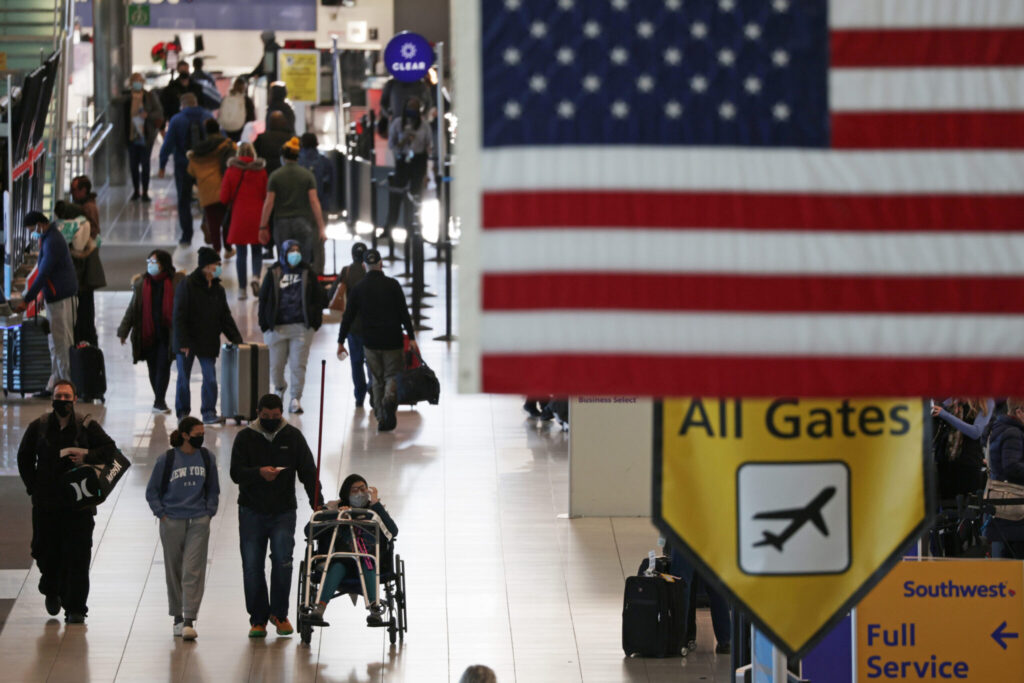
The Biden administration will send close to $1 billion to airports across the country to upgrade terminal facilities, Transportation Secretary Pete Buttigieg announced Thursday. Among the recipients are the city of Spearfish and the Standing Rock Sioux Tribe.
The Standing Rock Airport will receive $700,000 out of $800,000 needed for a project near Fort Yates, North Dakota. John Pretty Bear, a member of the Standing Rock Sioux Tribal Council, told the North Dakota Monitor the grant will be used for a new pilots lounge. He added the accessory building is another important step in expanding the use of the tribal airport.
“It’s going to open the door where we’re going to have more abilities with the airport, too,” Pretty Bear said.
He also said in five or six years the tribe has plans to add a maintenance building that will attach to the new pilots lounge and expand the airport footprint further.
In South Dakota, the city of Spearfish will receive $1.95 million toward the $6.7 million construction of an approximately 3,300-square-foot general aviation terminal building.
The $970 million in grants will go to 144 airports in 44 states and three territories. Earmarked for terminal improvements, Buttigieg and other administration officials said the grants would fund projects to improve the passenger experience and create jobs.
The administration has worked to improve the air travel experience, Buttigieg told reporters Wednesday.
“Part of that better travel experience is to invest in our physical infrastructure to improve the airports that represent the beginning and end of every passenger’s journey and airports that are a key economic engine for workers who show up there every day and communities that rely on those airports to sustain their connectedness and their competitiveness,” Buttigieg said.
The grants will fund a variety of projects, ranging from building new terminals or concourses to making bathrooms bigger, Buttigieg said.
The funds would also help improve baggage systems and security screening areas, expand public transit options, build solar energy infrastructure and increase accessibility, Buttigieg said.
“This funding is real,” said Shannetta Griffin, the Federal Aviation Administration’s deputy administrator for airports. “We are changing lives.”
Buttigieg and Griffin briefed reporters on the grant selections on the condition their comments not be made public until Thursday.
The FAA received more than 600 applications for grants asking for a total of $14 billion, Griffin said.
Infrastructure law
The funding is authorized by the infrastructure law enacted in 2021. The grant selections this week represent the third round of roughly $1 billion of annual grant funding under the program. The law’s airport terminal program provides $5 billion over 5 years.
The total costs for the projects selected this year are more than $10.3 billion, meaning the grants announced Thursday cover an average of about 9.4% of total project costs.
Separate funding is available for aviation operations. The infrastructure law provides $25 billion in funding for airports, including the terminal grants.
Buttigieg highlighted grants to small airports in Appleton, Wisconsin, and on the Standing Rock Reservation that spans portions of North Dakota and South Dakota.
The Appleton International Airport will receive $3.4 million for a $78 million overhaul that includes adding four gates, updating buildings and improving access.
The largest grant in this year’s selections will go to Fort Lauderdale International Airport in Florida. A $50 million grant will be put toward a $221 million terminal connector.
Large grants will also go to major hubs, including $40 million for Chicago’s O’Hare International Airport, $36 million for the Phoenix airport, $35 million for Washington Dulles International Airport in Northern Virginia and $26.6 million for Denver’s airport.
Buttigieg will be in Charlotte, North Carolina, on Thursday to announce a $27 million grant for that city’s airport to replace passenger boarding bridges.
— The staffs of South Dakota Searchlight and the North Dakota Monitor contributed to this report.
